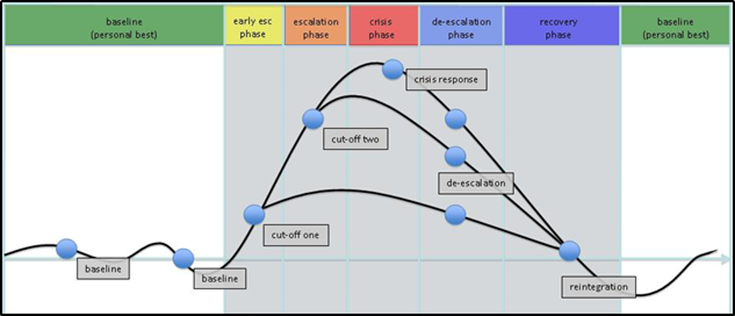
Here are some helpful tips that I hope you can share with your school communities so that folks are normed on how to support during a crisis.
February Learning Lab Blasts!
What to do when you see a crisis occurring
What is a crisis?
If the child has support, what can I do to help?
A student in crisis is not a show, and the best thing that you can do is clear students and families from the area. If the students or families are expressing concern, that is perfectly normal, and you can validate those feelings as well as reassure them that there are folks with the appropriate training to support these students and that they are safe. If there are additional comments or concerns that they would like to discuss, you can direct them to the front office to talk about next steps - without the student being able to hear.
When a student is in crisis, all rational goes out of the window and they are only able to hear very short (5 words or less) directions coming from one person, known as crisis communication. It may feel supportive to reinforce the directions being given to the student by the adult with them, but this can often lead to confusion for the student or even make you a target of their behaviors. It is best to let the primary respondent take the lead.
If you feel like the adult needs support, you can ask the adult if they would like for you to notify the office or administration for additional support. Realize – you do not need to support directly to be helpful.
What about if the child is unsupported?
As mentioned above, a student in crisis is unable to process many words at a time. When communicating, it is imperative that you can state directions in 5 words or less. Example: “put the chair down.” This crisis communication should be used in the case that the student is doing things that have the possibility to cause imminent harm to them or other students while you are keeping eyes on them. Otherwise, if for example, they are just yelling and screaming in the yard but not posing a threat to those around them or themselves, you can just keep your eyes on the student and call for support.
Caveat: If you are a teacher or other staff that is highly familiar with the student and their plan, please feel empowered to use crisis communication and try to de-escalate the child while waiting on further support
The main focus in a crisis moment is to get the student to a de-escalation stage, not to let them know about their consequences. Following an escalation, there will always be a key reflect, restore and reintegration piece, but that is only talked about when the student is back at baseline. Talking about consequences in the moment, or, for example, using language around important people in their lives being “disappointed.” tends to only exacerbate the situation. Remember: the key focus is to get the student back to baseline and in a state of relative control.
I hope this was helpful and empowers you to feel more able to support our students in crisis!



 RSS Feed
RSS Feed